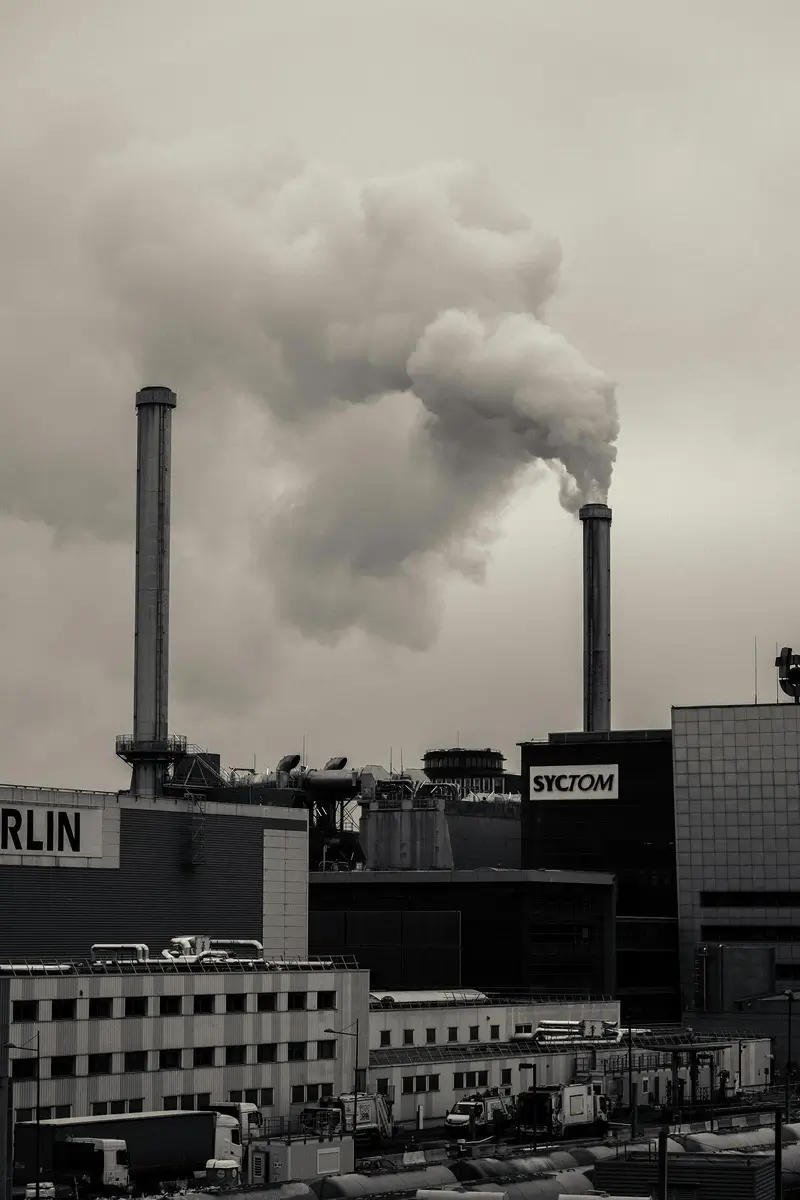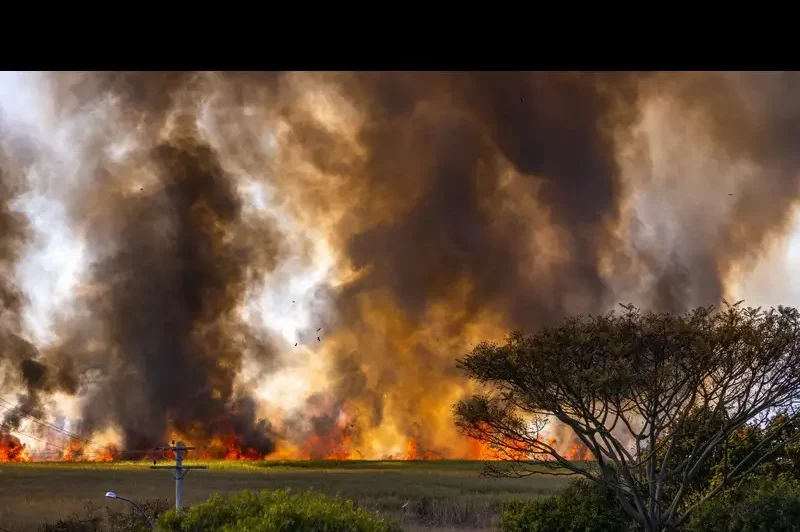Smog is one of the most pressing environmental issues affecting urban areas worldwide. It’s a visible, harmful mixture of smoke, fog, and pollutants that can severely impact air quality.
Understanding smog, what it is, where it comes from, and how it affects both human health and the environment—is essential for us to tackle this growing problem. In this article, we’ll explore the causes of smog, the different types of smog, its effects, and the solutions we can adopt to reduce its impact.

What Exactly is Smog?
Smog, short for “smoke fog,” is a type of air pollution that consists of a mixture of particulate matter and gases. It is a yellowish-brownish-grey haze that is formed in the presence of water droplets and chemical reactions of pollutants in the air. It has an unpleasant odor due to its gaseous components.
It is most commonly found in urban environments, where industrial activities and transportation contribute to poor air quality. Smog can be dangerous, as it often contains pollutants like sulfur dioxide, nitrogen oxides, carbon monoxide, and ozone—substances that are harmful to both humans and wildlife.
Types of Smog: Classic vs. Modern Smog
There are two main types of smog: classic smog (also called “London-type smog”) and photochemical smog (commonly known as “Los Angeles-type smog”). These two types differ in their formation and the pollutants involved.
- Classic Smog is associated with colder, industrialized areas, where pollutants like sulfur dioxide mix with fog, creating thick, suffocating air.
- Photochemical Smog forms in sunny, warm climates and is driven by sunlight reacting with pollutants like nitrogen oxides and volatile organic compounds (VOCs) to produce harmful ozone and other toxic compounds.
Key Components of Smog
The primary components of smog include:
- Particulate Matter: Tiny particles suspended in the air that can penetrate the lungs and bloodstream.
- Ground-level Ozone (O₃): A harmful gas contributing to respiratory issues.
- Nitrogen Dioxide (NO₂): A gas exacerbating asthma and other lung conditions.
- Volatile Organic Compounds (VOCs): Organic chemicals that evaporate into the air and contribute to smog formation.
The reactants of photochemical smog are nitric oxide (NO) and sunburnt hydrocarbons. Nitric oxide is oxidized to nitrogen dioxide within minutes to hours depending upon the concentration of pollutants gases. The yellow color of smog is due to the presence of nitrogen dioxide.
Causes of Smog
Smog doesn’t appear out of nowhere—it’s the result of several human activities and natural factors. Let’s break it down:
Human Activities Contributing to Smog
- Industrial Emissions: Factories and power plants release vast amounts of pollutants, including sulfur dioxide and nitrogen oxides, into the atmosphere. These emissions are one of the main contributors to smog formation, especially in cities with heavy industrial activity.
- Vehicle Emissions: Cars, trucks, and other vehicles emit nitrogen oxides, hydrocarbons, and carbon monoxide—all of which play a significant role in smog formation, particularly in areas with high traffic density.

Conditions required for the formation of smog
The following conditions are required for the formation of smog.
- There must be a sufficient amount of NO, hydrocarbons, and volatile organic compounds emitted by the vehicular traffic.
- Sunlight, so that some of the chemical reactions may occur at a rapid rate.
- The movement of air mass must be little so that reactions are not disturbed.
Natural Factors That Amplify Smog
While human activities are the primary cause of smog, natural factors also contribute. For instance, temperature inversions can trap pollutants close to the ground, preventing them from dispersing into the atmosphere. Wind patterns can also exacerbate smog by transporting polluted air from one area to another.

The Different Types of Smog
Smog isn’t just one thing—it has different forms, depending on location and conditions. Here’s a closer look:
Classic Smog (London-type Smog)
This type of smog became infamous during the Industrial Revolution in London, where thick clouds of smog would roll over the city. It’s caused by the combination of industrial pollution, burning coal, and cold, damp weather. The air was so thick with smoke and fog that it often led to dangerous visibility conditions and health problems.
It is also called reducing smog. It contains a high content of Sulphur dioxide, which is chemically reducing in nature. Its main causes are combustion of coal.
Photochemical Smog (Los Angeles-type Smog)
In contrast, photochemical smog is driven by sunlight. When sunlight reacts with pollutants like nitrogen oxides and VOCs, it creates a range of harmful chemicals, including ozone. This type of smog is most commonly seen in sunny, urban areas like Los Angeles, where warm temperatures help facilitate the chemical reactions that create smog.
It is also called oxidizing smog. It consists of a higher concentration of ozone.
Health and Environmental Impacts of Smog
Respiratory and Cardiovascular Issues
Smog can have serious health consequences, particularly for people with respiratory conditions like asthma or bronchitis. The fine particles in smog can penetrate deep into the lungs and bloodstream, leading to shortness of breath, coughing, and even cardiovascular problems.
Effects on Wildlife and Vegetation
Smog doesn’t just harm humans—it also poses a threat to wildlife and vegetation. Trees and plants, for example, can suffer from damage to their leaves and reduced photosynthesis, which can weaken ecosystems over time.
How Smog Affects Global Warming and Climate Change
While smog is often seen as a localized issue, it can also have broader implications for the planet. The pollutants in smog—especially ozone and particulate matter—can contribute to global warming by trapping heat in the atmosphere. The relationship between smog and climate change is complex, but there’s no doubt that reducing smog can help mitigate the effects of global warming.
Efforts to Combat Smog
Government Policies and Regulations
Governments around the world have implemented policies to tackle smog. In many places, emission limits have been set for factories, vehicles, and other sources of pollution. For instance, stricter vehicle emission standards and the adoption of cleaner technologies are some of the key measures being used to reduce smog.
Technological Innovations
Technology plays a critical role in the fight against smog. From electric vehicles to clean energy solutions like solar and wind power, there are many innovative technologies that can help reduce air pollution. Additionally, advances in air filtration and environmental monitoring can help cities identify smog hotspots and address pollution more effectively.
How Individuals Can Help Reduce Smog
While large-scale solutions are important, individuals also play a crucial role in reducing smog. Simple actions, like driving less, using public transportation, reducing energy consumption, and supporting clean energy initiatives, can all contribute to better air quality.
Global Smog Hotspots
Some cities around the world are notorious for their smog problems, and they serve as critical case studies in
the battle against air pollution.
Lahore, Pakistan
Lahore is the biggest city in the Province of Punjab in Pakistan. It is now the most affected city by smog. It is the number 1 polluted city in the world. Due to industrialization and coal plants and vehicle exhausts.
Beijing, China
China’s capital has faced some of the worst smog in the world, primarily due to industrialization and a high population density. However, in recent years, the government has taken significant steps to reduce emissions, such as closing coal plants and promoting electric vehicles.
New Delhi, India
New Delhi has long struggled with severe air pollution, with smog levels frequently reaching hazardous levels. The government has introduced various measures, including limiting vehicle use during peak pollution times, but challenges remain.
Los Angeles, USA
Once known for its smog-filled skies, Los Angeles has made significant progress in reducing air pollution through stringent air quality laws and the development of green technologies. Despite progress, the city still faces challenges in completely eradicating smog.
The Future of Smog: Will It Get Better or Worse?
As we look to the future, the question remains: Will smog become a thing of the past, or will it worsen? With continued advances in clean technology and stricter regulations, there’s hope that we can reduce smog levels globally. However, population growth, urbanization, and industrialization will continue to be challenges that require coordinated global action.
Conclusion
Smog is a complex environmental problem that affects millions of people worldwide. From its causes to its health and environmental impacts, smog is a problem we can’t afford to ignore. However, with concerted efforts from governments, industries, and individuals, we can work towards reducing smog and improving air quality for future generations.
